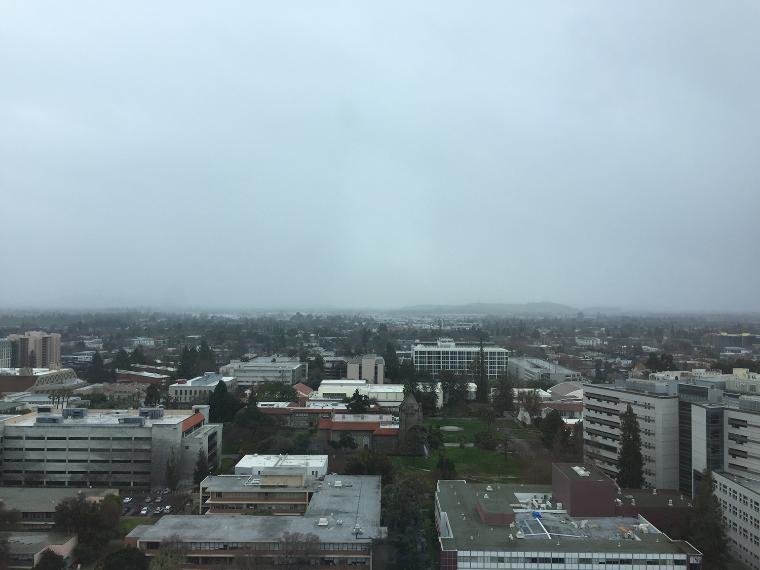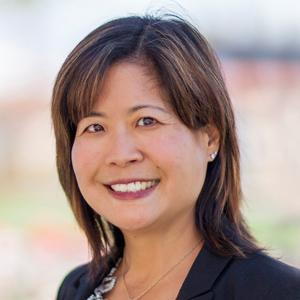
Elsa Chen & Colleagues host Reentry Workshop
Elsa's NSF grant leads to Reentry Workshop at Rutgers University on April 14/15, 2016. More info
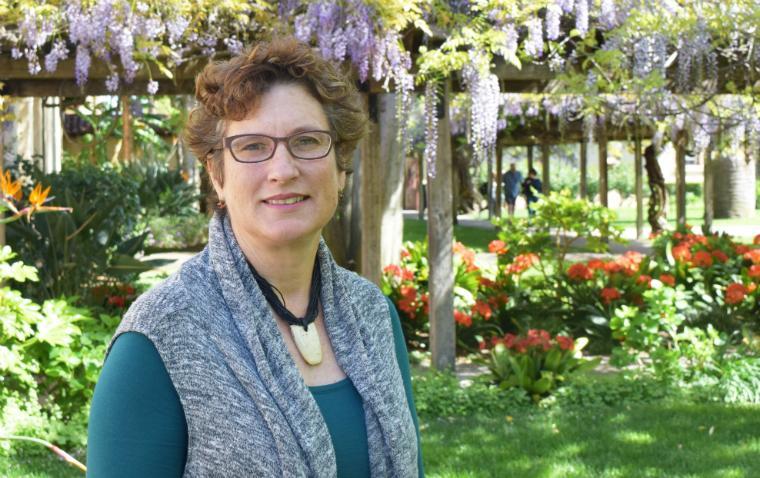
Research Will Measure Social Impact of Solar Lights in Tanzanian Villages
SANTA CLARA, Calif., March 15, 2016 –Leslie Gray, associate professor in the Department of Environmental Studies and Sciences at Santa Clara University, has been named the inaugural Miller Center Summer Chair in social-impact assessment.
Miller Center Summer Chairs draw on the expertise of Santa Clara University faculty to advance the global social-entrepreneur movement and the strategic initiatives of Miller Center for Social Entrepreneurship: social impact assessment; climate resilience; and “women rising.”
During 2016, Gray will direct an action research project to better understand the social benefit of the solar lights provided to the rural customers of Solar Sister, a “social enterprise” that went through Miller Center’s accelerator program, the Global Social Benefit Institute (GSBI®), in 2011. Social enterprises are organizations that use businesses or business strategies to solve persistent social problems such as those due to poverty.
Gray will supervise two student Global Social Benefit Fellows conducting the research, including eight weeks of fieldwork in Tanzania. The research will cover the social impact of Solar Sister solar products and programs including:
- Local small businesses made possible by Solar Sister products
- Positive health outcome impacts
- Education impacts
“We are excited to have Dr. Gray participate in this year’s action research project,” said Keith Warner, director of education and action research at Miller Center. “As part of her summer chair responsibilities, Dr. Gray will design the research project, participate in the fieldwork, and oversee the writing of a white paper and a peer-reviewed journal article. This important work advances how to measure impact in the social enterprise sector.”
Two Santa Clara University juniors have received Global Social Benefit Fellowships to serve as research assistants for Gray. Victoria Yu is a junior majoring in communication with a background in writing and research. Alaina Boyle is a junior majoring in psychobiology, who spent last summer teaching in The Gambia, West Africa. Both are in Santa Clara University’s Honors Program, and Alaina is a Johnson Scholar. These students will participate fully in the field research, and will assist Gray in writing manuscripts.
For more information:
Learn more about the Global Social Benefit Fellowship and its action research products.
About Miller Center for Social Entrepreneurship
Founded in 1997, Miller Center for Social Entrepreneurship is one of three Centers of Distinction at Santa Clara University. Miller Center accelerates global, innovation-based entrepreneurship in service to humanity. Its strategic focus is on poverty eradication through its three areas of work: The Global Social Benefit Institute (GSBI), Impact Capital, and Education and Action Research. To learn more about the Center or any of its social entrepreneurship programs, visit www.scu.edu/MillerCenter
About Santa Clara University
Santa Clara University, a comprehensive Jesuit, Catholic university located 40 miles south of San Francisco in California’s Silicon Valley, offers its more than 9,000 students rigorous undergraduate curricula in arts and sciences, business and engineering; master’s degrees in business, education, counseling psychology, pastoral ministry and theology; and law degrees and engineering Ph.D.’s. Distinguished nationally by one of the highest graduation rates among all U.S. master’s universities, California’s oldest operating higher-education institution demonstrates faith-inspired values of ethics and social justice. For more information, see www.scu.edu.
Media Contacts
Deborah Lohse | SCU Media Relations | dlohse@scu.edu | 408-554-5121
Pat Haines | Miller Center | phaines@scu.edu | 408-551-7118
® GSBI is a registered trademark of Santa Clara University. All rights reserved.
Associate Environmental Studies and Sciences Professor Leslie Gray has been named the inaugural Miller Center Summer Chair in social-impact assessment.
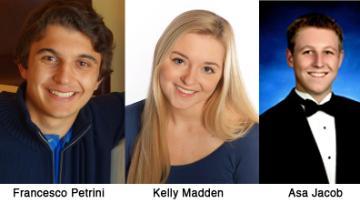
Congratulations to the following first year students whose reviews of current de Saisset Museum exhibits, written for Dr. Robin Tremblay-McGaw's English 2A Critical Thinking and Writing II: Art, Culture & Social Justice, have been selected for publication on the museum's website.
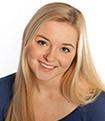 |
Kelly Madden Kelly Madden, a first year student from Seattle, Washington, is studying Public Health at Santa Clara University. |
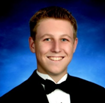 |
Asa Jacob Asa Jacob, hailing from Morgan Hill, California, is a student here at Santa Clara University.
He is currently studying computer engineering, and has a passion for technology.
|
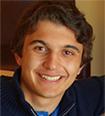 |
Francesco Petrini Francesco Petrini is an Electrical Engineering major at Santa Clara University. In his spare time, Francesco enjoys reading about the latest in science and tech, cooking authentic Italian foods, and, naturally, cheering on the San Francisco Giants. |
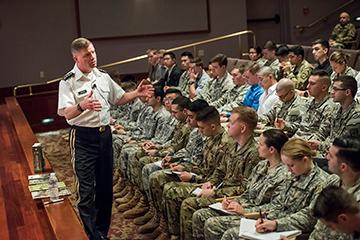
The Santa Clara ROTC has plenty to celebrate this year, with events to mark the 100 years of our national ROTC program, an inspiring visit from current Commanding General of United States Army Training and Doctrine Command, General David G. Perkins, and the promotion of Santa Clara’s own Master Sergeant Jacoby Gadson to Sergeant Major.
The 100-year anniversary gives the organization the opportunity to come together with alumni classes from Stanford, San Jose State, and U.C. Santa Cruz to reflect on the accomplishments of their collaborative efforts. In addition to celebrating all who helped build this program, the event will also serve as the kickoff of the newly founded Bronco Battalion ROTC Alumni Association. The festivities take place at the Silicon Valley Capital Club on April 29. Tickets are available here.
Another important event was a visit from the highly decorated General Perkins. In addition to his distinguished military experience that includes three tours in Iraq, General Perkins holds a B.S. from the United States Military Academy at West Point, a master’s in mechanical engineering from the University of Michigan, and a master’s in national security and strategic studies from the Naval War College. General Perkins is one of only 211 four-star generals in the history of the U.S. Army who achieved that rank while on active duty in the service.
During his visit, he addressed mission command and leadership development with the cadets. The General spoke to the importance of a soldier’s actions, emphasizing that they are judged by what they do in times of crisis—not by what they know. He also emphasized the need to always pursue results in a positive manner so as to win with dignity, and to protect your inheritance of trust by never squandering it in a selfish act.
Further cause for celebration was the announcement that SCU’s own Master Sergeant Jacoby Gadson is being promoted to Sergeant Major in June. His promotion is particularly notable, as only 1% of enlisted soldiers achieve this rank in their career. With twenty years of military service in total, MSG Gadson spent the 2014-2015 school year at Santa Clara.

Ann Wolfe is senior curator and deputy director of the Nevada Museum of Art. She and her husband, Allen Murray, and their two young boys, live in Reno. Prof. Kathleen Maxwell caught up with Ann in a phone interview in early February.
Like many first-year students, Ann arrived at Santa Clara with a broad range of interests, but no clear idea of which major she wanted to pursue. Santa Clara’s small classes and welcoming and nurturing environment had much appeal for Ann, who was raised on her family’s apricot farm in nearby Brentwood, California.
The interdisciplinarity of the art history major and the Medieval and Renaissance Studies minor at Santa Clara attracted Ann. It wasn’t until the second half of her junior year, however, that she discovered the de Saisset Museum on campus. She applied for a job and was hired as a security guard. Several months later Ann was promoted to curatorial assistant for JoAnne Northrup, then curator at the de Saisset. There began a friendship and professional partnership that remains firmly in place today.
After graduation, Ann served as a substitute teacher for a year and began to contemplate graduate school in art history. Northrup encouraged her to look at University of Southern California’s graduate program in Museum Studies from which she herself had graduated. USC’s program offered advanced courses in art history as well as practical training in museum work, including fundraising, marketing, and curatorial practice. Ann received a generous fellowship and enrolled. On Ann’s last day of class, Northrup, who was by now curator at the San Jose Museum of Art, offered Ann a position as assistant curator. Ann worked at SJMA for four years before moving to Reno as curator of exhibitions and collections at the Nevada Museum of Art. In 2011 she was promoted to senior curator and deputy director. In 2012, Northrup joined the staff there as Director of Contemporary Art Initiatives.
In her ten years at the Nevada Museum of Art, Ann has overseen 135 exhibitions and written twelve books. Her most recent is an impressively comprehensive catalog for the exhibit entitled “Tahoe: A Visual History,” which was published in September 2015 and is already in its second printing. This work, her third book published by Skira Rizzoli, includes contributions by the likes of Kevin Starr and features 400 works related to the Tahoe/Donner region by 125 different artists. This exhibit occupied all 15,000 square feet of exhibition space at the Nevada Museum of Art and was more than four years in the making.
Ann attributes her success to her extensive network of colleagues. Building a network essentially consists of forming relationships with a wide variety of individuals. She acknowledges that this is hard for undergraduates to accomplish, but says the process began as soon as she started securing internships, some of which were only part time, short term, and unpaid. Internships are also very helpful for learning about the many different types of opportunities in the museum world. These include education, marketing, and fundraising, in addition to curatorial positions and project management.
Ann also encouraged those interested in pursuing museum careers not to overlook smaller venues, as they may actually offer more opportunities than larger institutions. The Palo Alto Arts Center was one example of a smaller venue that Ann named; many art history majors from Santa Clara have interned there over the years.
Finally, Ann noted that who we are is dependent on our roots. The values and work ethic with which you were raised largely determines your drive and your desire for excellence. Build your networks on relationships based upon respect and trust, she urged, and the cards will eventually fall into place.
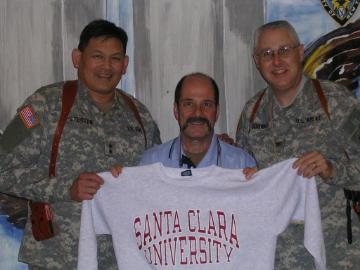
“Santa Clara Army ROTC is part of the Eichenberg DNA,” says Tom Eichenberg ’76, M.S. ’77. His father, William L. Eichenberg ’41, served as an assistant professor of military science during WWII, brothers William L. Eichenberg ’65 and James R. Eichenberg ’77, and nephew James P. Eichenberg ’92 have all graduated from the ROTC program, which is celebrating its 100th anniversary this year.
“Every time my dad went back to campus, he would stop by the Mission Church and look over the names of all the graduates who died in WWII,” says Eichenberg. “He’d go down the list and know every soldier and where they died. He showed me that when you’re an ROTC cadet and take the oath of office, you’re truly making a solemn commitment.”
After graduating from the program and completing his M.S. in applied economics, Eichenberg reported for active duty at Hawaii’s famed Schofield Barracks in October 1977—the same filming location as the movie From Here To Eternity. Here he met his wife, Yvonne Kuwana, at a dinner at the Pearl Harbor Officers Club. One year later, the couple married at the post before relocating to Fort Polk, just outsideof Leesville, Louisiana.
After decades of dual civilian and military reserve careers, Eichenberg was recalled to active duty when his command came up for rotation in Iraq in 2005, requesting a job as director of the National Iraqi Assistance Center (NIAC), a walk-in humanitarian assistance facility with “30 dedicated Iraqis on staff, Sunnis, Shias, and Kurds, who all got along and risked their lives every day to come to work.”
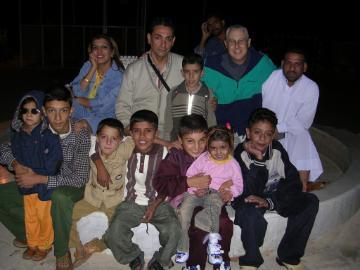
NIAC projects included directing the Baghdad Job Fair, locating missing persons, assisting battered women and children through safe houses and counseling, and providing sewing machines to help local women make and sell scarves at local bazars in Baghdad. The Center’s medical section assisted patients who had nowhere else to go outside of the NIAC.
“We worked with very dedicated organizations and were able to develop programs for heart surgery, plastic surgery for burn victims, and corneal transplants,” Eichenberg says. “We even had the largest prosthetics clinic in Iraq, which we ultimately turned over to the Iraqi Surgeon General.”
While based in Baghdad, Eichenberg got the idea to form an impromptu SCU Alumni Chapter, which included Lieutenant General Joseph Peterson ’72 and Special Agent Bob Gorini ’69, after running into the latter as he sported an SCU t-shirt during an early morning gym workout.
This year marks Eichenberg’s 40th class reunion year and Santa Clara’s 100th anniversary celebration of the national ROTC program, with many of his ROTC classmates who’ve just wrapped up careers at the Pentagon planning to attend. “It will be amazing to see people you lived with in the dorms 40 years ago,” he says. “I haven’t been back to campus in so long, but to me, Santa Clara has become one of the prettiest campuses in the nation.”
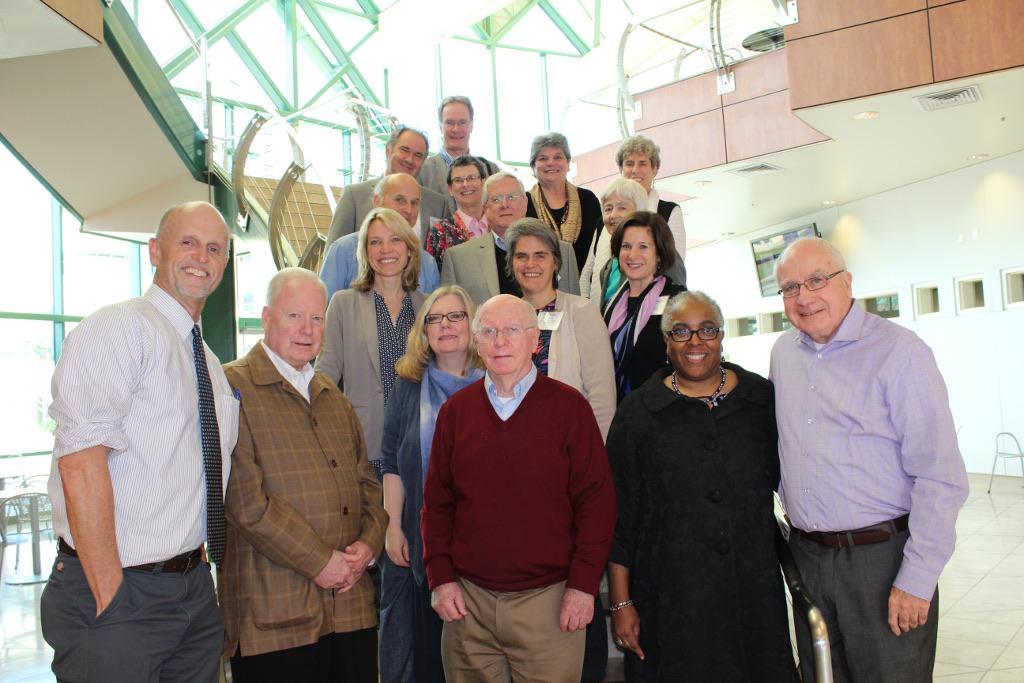
A group of ethicists gathered at Santa Clara University on February 11 and 12 for a conference called "Conscience and Catholic Health Care: From Clinical Contexts to Government Mandates."
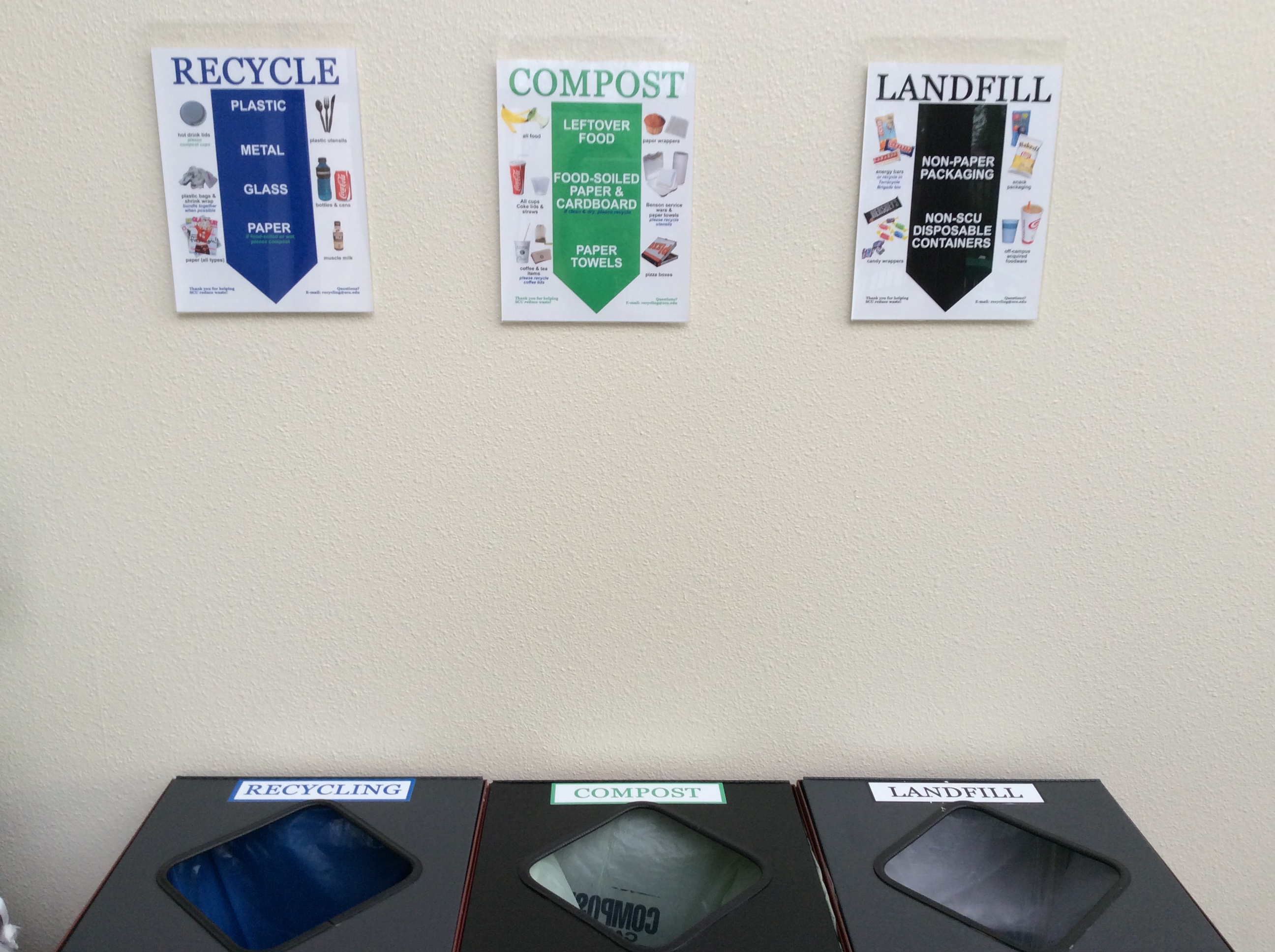
Use Compost and Recycling Bins
Each individual of us and collectively, we could help our university moving toward zero waste by using compost and recycling bins placing throughout the campus and offices. These practices will help us reducing landfill waste from campus with the goal of achieving Zero Waste.
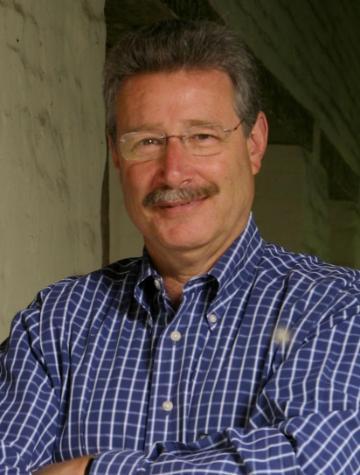
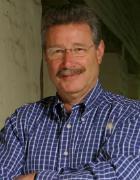
Barry Posner, Accolti Endowed Professor of Leadership, ranked 8th in the top 30 leadership gurus of 2016, ranked by Global Guru.
Find the full list here»
Learn more about Professor Barry Posner»
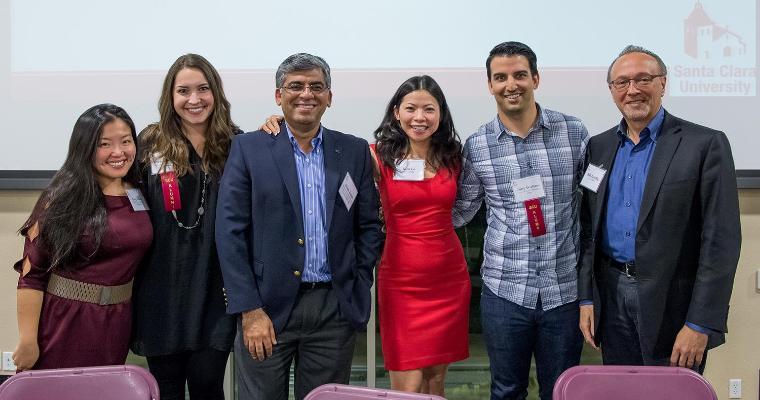
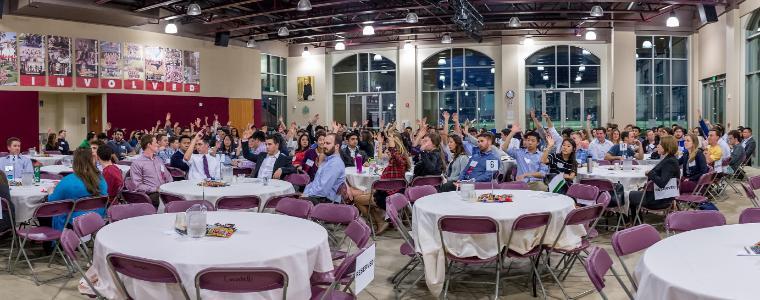
The Department of Accounting recently held its annual Accounting Information Night, during which accounting professionals met with over 100 sophomore business students to discuss career paths and opportunities in the accounting profession. Find photos of the event here.
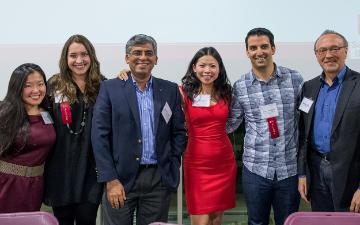
We would like to thank Lewis Chew, the Executive VP and CFO of Dolby Laboratories, Inc., for once again serving as our event's moderator. We'd also like to thank our panelists, pictured right:
- Amy Chan, Tax Operations Manager, Facebook
- Tori Hack, Senior Associate, Ernst & Young
- Aftab Jamil, Partner and National Practice Leader, BDO USA
- Kim Le, CEO and Founder, A2Q2
- Joey Wattoo, Senior Revenue Manager, Uber
- Bill Zerella, CFO, FitBit
And thank you to our firms for joining us for the evening, as well as participating in our exciting raffle, where we gave away a bunch of cool prizes, which included Giants tickets, Sharks tickets, an iPad Mini, gift cards, backpacks with goodies inside, an Amazon Kindle, and a Fitbit.
| Abbott, Stringham & Lynch | KPMG |
| Accretive Solutions | LMGW Certified Public Accountants |
| Armanino, LLP | Loomis & Co. CPAs, LLP |
| BDO | Moss Adams LLP |
| CalCPA | PricewaterhouseCoopers |
| Deloitte | Protiviti |
| Ernst & Young, LLP | RINA Accountancy Corporation |
| Frank, Rimerman + Co., LLP | RSM |
| Grant Thornton, LLP | SensibaSan Filippo, LLP |
| Hayashi Wayland Accounting & Consulting, LLP |
SCU sophomores participating in the discussion with panelists.
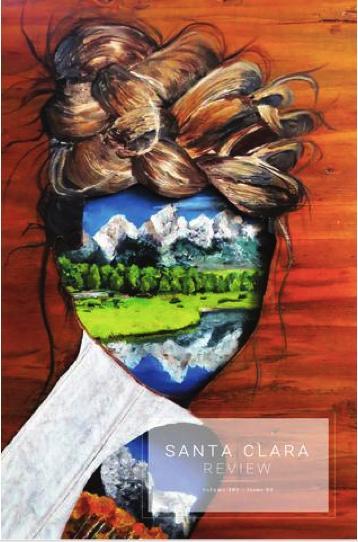
Casey Clifford ’16 is wrapping up her undergraduate studies as an environmental science major with a studio art minor. She manages to merge her two areas of study by working as an illustrator for North American Marine Environment Protection Association, where her work has been featured in multiple activity booklets used to educate children about the marine environment. Clifford also began working as an illustrator for Linda Hylkema, the director of SCU's Cultural Resource Management in March 2015, where she has drawn numerous objects excavated beneath campus from the mission period to be published in archaeological reports.
Her interest in the combination of environmental science and studio art began in fall 2012 when Clifford took the Sustainable Living Undergraduate Research Project (SLURP), a class where students conduct a project to bring attention to the environment. For this project, she created three paintings on recycled wood to emphasize sustainability through creative expression, which resulted in a newfound passion for the scientist-artist.
In the fall of her junior year, Clifford traveled abroad to the Galapagos Islands, where she was able to snorkel and scuba dive with some of her favorite marine organisms, including sharks, manta rays, penguins, and sea lions. She was also able to spend time sketching the marine iguanas that would lounge on the beach.
Clifford has taken numerous art classes while at Santa Clara, including clay sculpture, drawing, mixed media painting, life drawing, and numerous painting classes. She has been featured the past three years in the Santa Clara Review and her work is the cover of last year’s edition. In spring 2015, she was awarded the Mary F. Sullivan and Gerald P. Sullivan S.J. Art Award by the art department. This award is for students particularly interested in life drawings, which Clifford excels at. Since then, she has created many paintings of the human form.
She is currently applying to master’s programs to pursue an advanced degree in environmental humanities.
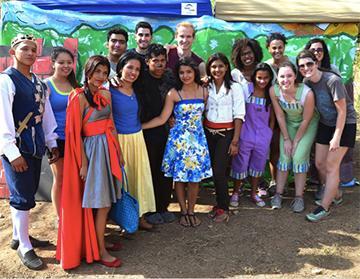
Judy Ngo ’16 plans to take her ten years of vocal training, as well as her singing, acting and dance experience, and combine it with her passion for arts advocacy and youth to become a teaching artist. Her goal is clear—to spend her days creating community among young people while sharing stories worth telling.
Ngo’s desire to work with children is due, in part, to the 100 hours she has spent in classrooms throughout her four years at Santa Clara. Whether she was teaching a dance workshop to kindergarteners and first graders at Washington Elementary School as part of the SCU Ignatian Center’s Thriving Neighbors Initiative, or assisting in a special education classroom at Buchser Middle School, Ngo has felt a calling to work with children.
When not serving in the classroom through the Community Based Learning program at SCU, she has gained further experience by offering her time as a children’s summer reading volunteer, serving as a preschool summer camp counselor, and participating in a performing arts immersion trip to Nicaragua through the Department of Theatre and Dance.
She is the currently the president of Artists Striving to End Poverty at SCU, a student chapter of a New York based organization. Through ASTEP, Ngo has participated in and led arts outreach programs in theatre and dance at Sacred Heart Community Services and Washington Elementary School. She has also helped to fundraise money for these outreach programs through silent auction and cabaret variety shows with ASTEP club members.
For her many efforts and successes, Ngo has been recognized by the Jesuit Honor Society, Alpha Sigma Nu; the Honor Society in Education, Kappa Delta Pi; and the Theatre Honor Society, Alpha Psi Omega.
When reflecting on the many artistic and educational experiences that Santa Clara has afforded her, Ngo says, “I have learned so much from collaborating with highly experienced and talented students and faculty. I have also learned the importance of being able to adapt to moments in live theatre when something goes unplanned. These lessons in flexibility and collaboration will be instrumental in my success in the classroom.”
Before having a classroom to call her own, Ngo is hoping to pursue a Master’s in Educational Theatre at NYU.
Above: City Hall includes an 18-story tower among other buildings in the complex. This is the view out of the window near the staff elevators onto the SJSU campus.
The view from San José City Hall, and from the windows that are just steps from my desk outside of the mayor's office on the 18th floor, is a beautiful one, especially in clear weather. But even when the skies are not clear, the sun isn't visible, and the rain pours down, creating tiny droplets streaming gently with gravity along the crystal-clear glass windows, the view is pretty breathtaking. From the top of City Hall, you can see a lot of the city.
Similarly, from the top of the city, you start to get a sense of what's going on in local politics. Councilmembers badge into the office and walk by your desk, glancing your way and saying hello as they increase the length of their stride. Important people wait for meetings with Mayor Liccardo just ten feet from your desk. And staffers discuss important policy initiatives with an unbridled energy. It's almost as breathtaking as the view from the window.
Policy Team meetings summarize the staff's work for the week in preparation for the next City Council Meeting. San José operates under the Council-Manager form of local government, which is atypical for a city of its size. Under this system, a City Manager runs most departments, with the Mayor relegated to a mostly legislative role. Understanding that distinction is key to understanding how the Mayor's Office operates. We can't dictate policy actions or regulations. But we can move the agenda, and that's something that the team has done a wonderful job in advancing.
My work, and the work of the entire Communications Team, is simple: communicate the Mayor's message to the public. So far, I've done this in so many ways--responding to constituent mail, researching media coverage, writing copy for the mayor's website, among other tasks. But the core remains the same. How can we talk about the Mayor's accomplishments, and about his agenda? How can we drive the discussion, rather than being the discussion?
I'm very privileged to have the opportunity to intern at the Office of Mayor Sam Liccardo through NPI. Getting to see the inner workings of local government, an issue about which I am particularly passionate, and having the opportunity to learn among the best and the brightest mayoral staff could not be a more perfect way to lean into my senior year. And I'm reminded every day of these blessings by the view out of the 18th floor window.
Above: City Hall includes an 18-story tower among other buildings in the complex. This is the view out of the window near the staff elevators onto the SJSU campus.
The view from San José City Hall, and from the windows that are just steps from my desk outside of the mayor's office on the 18th floor, is a beautiful one, especially in clear weather. But even when the skies are not clear, the sun isn't visible, and the rain pours down, creating tiny droplets streaming gently with gravity along the crystal-clear glass windows, the view is pretty breathtaking. From the top of City Hall, you can see a lot of the city.
Similarly, from the top of the city, you start to get a sense of what's going on in local politics. Councilmembers badge into the office and walk by your desk, glancing your way and saying hello as they increase the length of their stride. Important people wait for meetings with Mayor Liccardo just ten feet from your desk. And staffers discuss important policy initiatives with an unbridled energy. It's almost as breathtaking as the view from the window.
Policy Team meetings summarize the staff's work for the week in preparation for the next City Council Meeting. San José operates under the Council-Manager form of local government, which is atypical for a city of its size. Under this system, a City Manager runs most departments, with the Mayor relegated to a mostly legislative role. Understanding that distinction is key to understanding how the Mayor's Office operates. We can't dictate policy actions or regulations. But we can move the agenda, and that's something that the team has done a wonderful job in advancing.
My work, and the work of the entire Communications Team, is simple: communicate the Mayor's message to the public. So far, I've done this in so many ways--responding to constituent mail, researching media coverage, writing copy for the mayor's website, among other tasks. But the core remains the same. How can we talk about the Mayor's accomplishments, and about his agenda? How can we drive the discussion, rather than being the discussion?
I'm very privileged to have the opportunity to intern at the Office of Mayor Sam Liccardo through NPI. Getting to see the inner workings of local government, an issue about which I am particularly passionate, and having the opportunity to learn among the best and the brightest mayoral staff could not be a more perfect way to lean into my senior year. And I'm reminded every day of these blessings by the view out of the 18th floor window.

Great communication is far more complex than simply choosing the right words. While articulating ideas accurately and concisely is essential, we also need to consider other important factors. Here are five variables to keep in mind:
- Active Listening – Communication is a two-way street. Most of us need to be better listeners, especially in today’s world, where we are distracted by cell phones, computers, social media and devices. I first learned about active listening from PET (Parent Effectiveness Training) in Action by Thomas Gordon when I was an undergraduate, and it’s still pertinent. Active listening involves listening with all your senses rather than just hearing what’s been said.
- Appropriate Timing – Delivering praise right away is usually OK, but criticism may need to wait. Timing is everything. People usually know when they’ve made a mistake and don’t appreciate someone pointing it out right away when emotions are high. When providing critical feedback it’s best to have a plan to be helpful, not hurtful.
- Tone (emotion) – The tone needs to match the message. When evaluating and teaching other coaches through the National Soccer Coaches Association of America I’ve seen coaches screaming at their team to “relax,” or hearing a coach say, “we need more energy” in a monotone voice, or explaining how a particular loss is not the end of the world while sounding like they’re reading an obituary.
- Nonverbal – Most experts agree that 80-90 percent of communication is nonverbal. Nonverbal communication can relay an array of messages like confidence, optimism, excitement, worry, concern, nervousness, or fear, just to name a few. Nonverbal communication can lead us to send unintended or contradictory messages to the words we say. I review video recordings of my presentations, lectures, meetings, and coaching to help improve my nonverbal communication.
- Environment – The location of your communication should be appropriate for the purpose of the meeting. Should you meet at your office, their office, or a neutral site? How about over a meal, during a round of golf, or at a sporting event? There are other variables to consider like position relative to one another, standing or sitting, furniture, lighting, and door open or closed. Often we end up choosing a location out of convenience, rather than considering the most appropriate location.
The key to having great teamwork and relationships is effective communication. Communication is multifaceted and requires more than just a casual approach in order to be highly effective. The best communicators – whether they are teachers, coaches, managers, parents or great storytellers – know the importance of these five variables and are careful to consider each factor for a given situation. The goal is to create an environment where we are more likely to understand one another through careful and thoughtful communication.
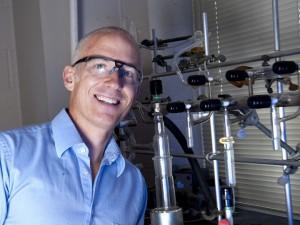
Dr. Eric Tillman joined us in the fall as a Fletcher Jones Professor in Chemistry and Biochemistry. He began his academic career at Bucknell University, where he maintained an active research group involving undergraduate and master’s students. During his 13 years at Bucknell, he regularly taught organic chemistry, polymer chemistry, and physical organic chemistry.
Tillman was born in La Jolla, CA, went to Cal Poly SLO as an undergraduate, and earned his Ph.D. in chemistry from the University of Southern California in 2001. As a graduate student, Tillman was trained in polymer and organic chemistry by Thieo Hogen-Esch and focused his research on reactions of polymer anions. From USC, he went to Caltech to be a postdoc in Nate Lewis’ group. There, he studied chemical sensor arrays, which relied on polymer films as the sensing component in vapor detecting devices. He then joined the faculty at Bucknell as an assistant professor, was tenured in 2008, and eventually was promoted to full professor in 2012.
Dr. Tillman admits that he wasn’t on the job market and was happy at Bucknell when he received a letter alerting him to the position at Santa Clara. Bucknell was the only academic home he had known, and he had put together a productive research lab that took many years of fine-tuning to get right. Despite the cold winters spent shoveling snow and general lack of most things you would take for granted in Silicon Valley, he and his family had slowly adjusted to life in rural Pennsylvania. After becoming aware of the position opening at Santa Clara, he did some research to learn as much as he could about the department here. Learning what he could before coming to the campus, Dr. Tillman was impressed with the current faculty’s research projects and noted that the hires made over the last several years boded well for the department in the long term. It looked like the department supported the balance of teaching and research that he was looking for, and he couldn’t help but be excited about the University’s proposed “STEM complex.” While this all sounded wonderful to him – truth be told – he was also drawn to the possibility of returning to his home state of California.
On his visit to the Santa Clara campus, he had a chance to meet the faculty and many of the students doing research in the department. Dr. Tillman had a great time talking to all the professors, and he really felt like he connected with many both personally and professionally. “I was pleasantly surprised by the turnout of students at both of my talks (yes, they made me give two talks) and I noticed the amount of activity going on when I peered into the faculty research labs during the afternoon hours,” Tillman reflected. By the end of the two-day marathon interview, he left with a feeling that the department would be a great fit for him, and the faculty and staff would make great group of colleagues. “In addition to being impressed by the department, I thought the campus and the area were beautiful and, despite ridiculous real estate prices, San Jose seemed like a great city to live,” he added.
Now, with only one full quarter at Santa Clara behind him, Tillman is very happy with his decision to come here. He enjoys his time with the great group of students he is teaching in Organic Chemistry, and is delighted by the number of students eager to get into the research lab. “Getting my lab set up again certainly was a challenge, but I already have student researchers helping me out and I’m optimistic my research group will quickly be back in full swing,” he enthuses.
The focus of Tillman’s research is in polymer and organic synthesis. Together with his students, he uses controlled polymerization methods to make polymer chains with reactive chain ends, which allow the polymers to undergo further reactions. For example, an area of interest in his group is devising a sequence to convert linear polymer chains into cyclic polymers by joining the polymer chain ends. Cyclic polymers have been of interest to chemists for decades, yet are notoriously difficult to make. To have success in an elaborate sequence leading to architecturally interesting large polymers, he and his students first carry out model reactions that allow them to gauge the success of each reaction step. This helps students gain experience performing technically easier experiments, while teaching them the skills needed to eventually carry out more complex polymerizations and reactions at polymer chain ends. This work in cyclic polymers has led to two patents and seven papers, all with student coauthors.
In total, his research group has had over 50 students in the lab and produced 29 papers, all with student coauthors. Dr. Tillman’s research is currently supported by grants from NSF and Petroleum Research Fund. His SCU research lab is in Alumni Science 162, with two students already in his group and two more joining in the spring quarter.
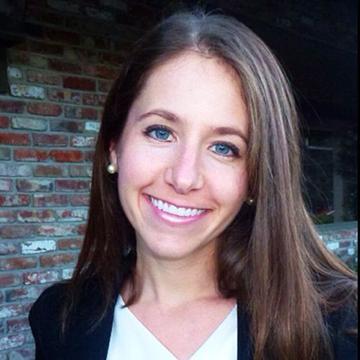
Following advanced study of dental implant surgery in 2015, when she earned her FICOI degree (Fellow of the International Congress of Oral Implantologists), Dr. Major is now in her third year of private practice as a general dentist in Sonoma County. “In my free time, I serve as treasurer on the board of my local dental society and spend my Fridays teaching the next wave of future dentists at UCSF School of Dentistry,” she notes, but she also gets out of the office, “I also enjoy road cycling and will be participating in several 100+ mile riding events this year.”
Amanda studied Chemistry and French and graduated from SCU in 2009.
The Department of Music hosted their inaugural Music and Social Justice Festival on January 27-29, 2016 -- a three-day festival comprised of multiple interdisciplinary and collaborative events co-sponsored by the College of Arts and Sciences Salon Series on (in)humanity, the Office for Diversity and Inclusion, and the SCU-Presents Arts for Social Justice Program.
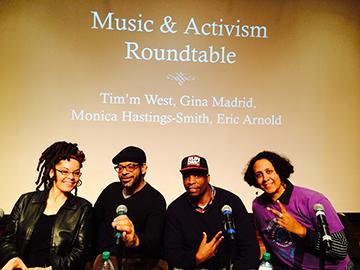
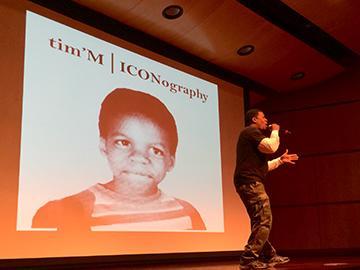
On the final night of the festival, SCU Music faculty, students, and special guests joined together to create a program of contemporary music devoted to social justice and protest, entitled, Coming Together. Through subversive and progressive musical vocabularies, the SCU New Music Ensemble, directed by Professor John Kennedy, performed two pieces: Thomas Albert’s, A Maze (With Grace), a musical gathering around Amazing Grace, and Cornelius Cardew’s, The Great Learning, which utilizes Confucius’ text on social good. Professor Kennedy also directed a dynamic performance of Frederic Rzewski’s iconic Coming Together - a composition immortalizing the 1971 Attica Prison uprising - that featured professors Teresa McCollough, Hans Boepple, and Scot Hanna-Weir as well as SCU music majors and local guest artists. To close the program, Dr. Hanna-Weir led the SCU Concert Choir in protest songs from South Africa and Chile.
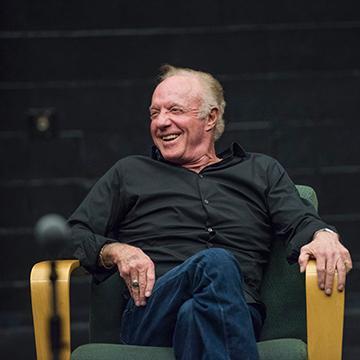
Some 30 students had the opportunity for an up-close conversation with actor James Caan, known for his nearly 100 roles in film and television that range from Sonny in The Godfather to Buddy’s dad in the comedy Elf. The Q&A was moderated by Knight Ridder/San Jose Mercury News Endowed Professor Michael Whalen.
In addition to regaling the audience with behind-the-scenes stories about the casting of The Godfather – which came together around a table in San Francisco for the price of four pastrami sandwiches, even though the studio executives insisted on spending an additional $450,000 for screen tests to confirm what Francis Ford Coppola already knew to be magic – Caan shared his hard-won wisdom about how to succeed in the business of filmmaking.
His first rule for show business is to prepare yourself so that you will be ready when your good luck arrives. Caan himself created luck early in his career by finagling his way into New York City's Neighborhood Playhouse School of the Theatre, despite having missed the application deadline.
Caan also spoke to the importance of trusting your instincts, saying that the first time you read a script brings out the most "real you" that will ever come through. He recalled an audition early in his career where he performed the scene raw and got the role. But then he made the mistake of studying his lines to death so that he, as a performer, had become unrecognizable to the director who hired him.
In order to be able to trust your instincts, Caan says it’s imperative to have an “inner life.” You have to make constant choices in how you live that make you interesting—more interesting than the other people auditioning for the same role.
Other advice he shared was the importance of having conflict in every single scene you create. He said this means that if you don’t find it in the script, you must create it yourself. “Writers don’t like this, but the words become unimportant, secondary. Your instincts are what matter,” Caan explained.
Caan also reflected on Marlon Brando as one the best actors he has worked with, citing the quality of “availability” as the reason why. He said that no one could throw Brando off because he was always deeply immersed in the moment. Caan advises young actors to never practice in front of the mirror, as this is the quickest path to losing the quality of availability. Instead, you must truly listen and respond to the people in front of you—not focus on your next line. Proving that he is just as committed as Brando was to being available in his acting, Caan reflected, “My favorite feeling is forgetting how I did a scene, because it means I was ‘in’ it.”
Another nugget of wisdom Caan acquired from his first 55 years as an actor is the realization that the most talented people in the business are the nicest. “The yellers and screamers are using diversionary tactics to distract you from their lack of talent,” he said. Real talent doesn’t need to resort to that.
Despite his confession of some arrogant early years in acting, it is clear that James Caan doesn’t need to resort to anything. And it isn’t that he’s quiet – quite the contrary – but his words come forth with wisdom, humor, humility, and a lingering echo of resonance that make you understand why he has staying power in an industry that doesn’t always want people to stay.
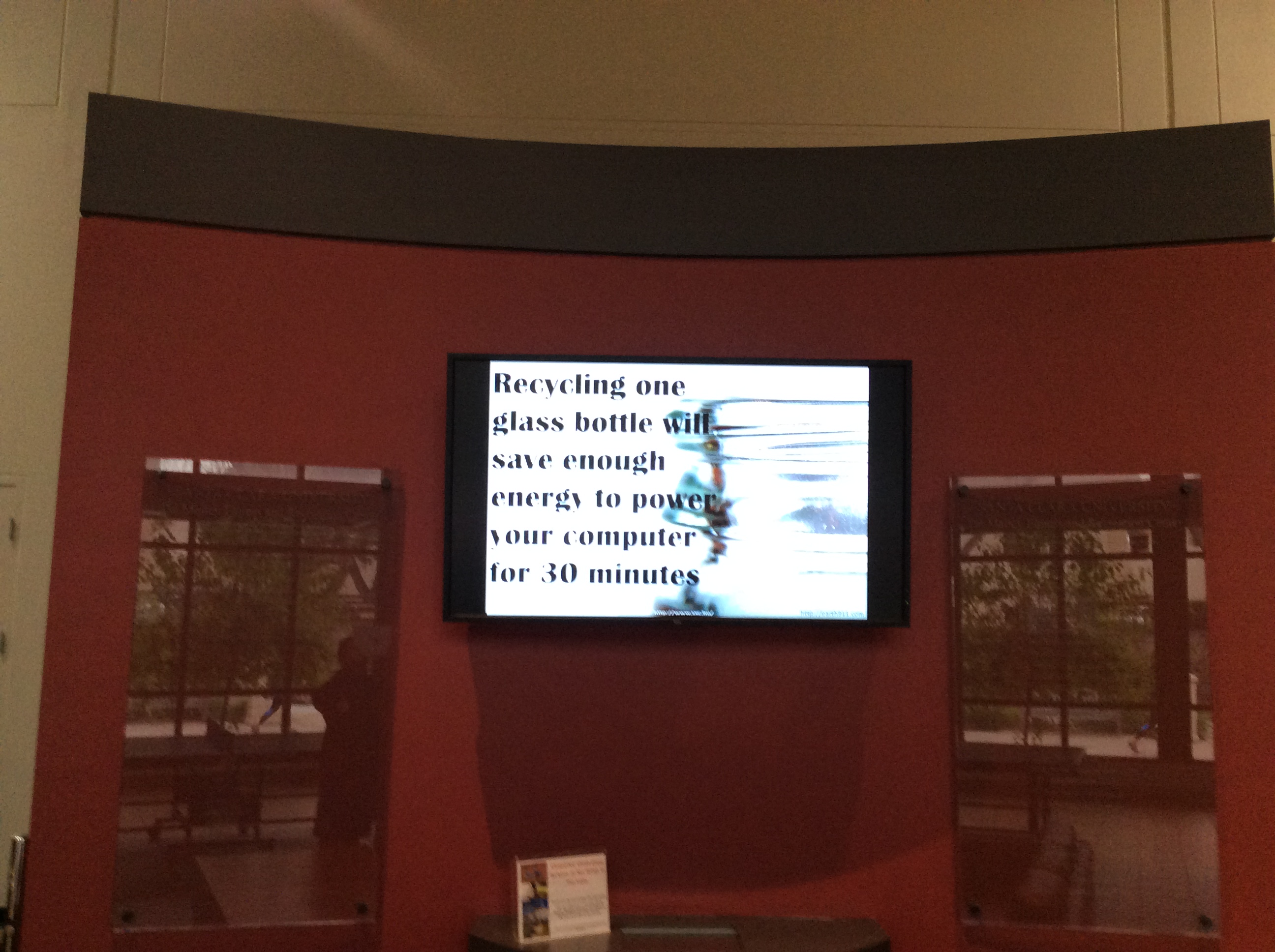
5 benefits of using a reusable water bottle:
- Better for our environment by reducing the amount of fossil fuels and toxins released into the air during production
- Durable, stylish, and can help you decrease your carbon footprint
- Tap water is more cost-efficient. Bottled water can cost up to 500 times the cost of tap water
- Better for your health and the health of your family by using a BPA-free, lead-free reusable bottle
- Most public facilities have water fountains to fill up your water bottle
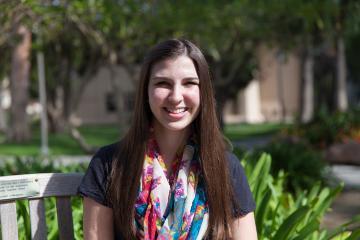
Reduce Waste
The Lord has done great things for us; we are filled with joy Psalm 126:3
When I read Psalm 126:3 I naturally think of how the Lord has blessed me abundantly and how fortunate I am. I am so lucky to be able to receive an education here at Santa Clara, to have myfamily and friends who love and support me and to have everything I could need and thensome. The Lord has been merciful and has always provided for me. I have never had to wonderwhen my next meal would be (aside from the times it feels like the clock is frozen in class!)When my clothes get old I can go down to the mall and buy new ones. When my dorm room gets cold I can crank up the heater and snuggle under blankets. I have everything I could possibly need, so why am I always longing for more?
Living in this culture of consumerism, it is easy to forget about how blessed I truly am when I am constantly bombarded with messages and advertisements that tell me I always need newer, better, and more things. Just when I think I have the latest and greatest new thing, an even newer one comes out. We are surrounded with the idea that what we have is never good enough and that we always need more. Often we are even told by the media that we are not good enough and need to be thinner, prettier, stronger, etc. and that we need to buy more products to achieve our goals. Unfortunately these lies can get in our heads and bring us down trapping us in a cycle of constant desire where we can never be satisfied.
Amidst all these confusing messages, what is one place we can turn that always remains consistent in this ever improving world? God. God's love is truly perfect and therefore never needs to be changed. He loves us unconditionally and it is in his love that we find true joy, not just the superficial pleasures that come from the material objects of this world. By simplifying our lives and refocusing on Him as we are called to do in this Lenten season, we will be overjoyed by how content we are with all that we have and all that we are.
The Pope has urged us to reduce waste saying “This culture of waste has made us insensitive even to the waste and disposal of food, which is even more despicable when all over the world, unfortunately, many individuals and families are suffering from hunger and malnutrition…. Throwing away food is like stealing from the table of the poor and the hungry.” We get so caught up in our shallow desires that we forget the grave needs of others. During Lent we should take time to reflect on how blessed we are and remember all those who are not as fortunate as ourselves. We should stop taking all that we have for granted and instead do whatever we can to use all that God has given us. Maybe this means finishing meals instead of throwing out good food. Perhaps it means donating old clothes instead of throwing them away. Whatever it may be, we should take care to remember that not everyone is as fortunate as us and do whatever we can, even the little things, to help our brothers and sisters in need remember that we are all children of God and to look at all the Lord has given us with joy and gratitude.
Environmental Issues
As Pope Francis notes in Laudato Si’, sometimes human intervention in the environment can be a good and necessary thing. We are learned men and women, let’s educate ourselves on environmental issues. Educate yourself on environmental issues!
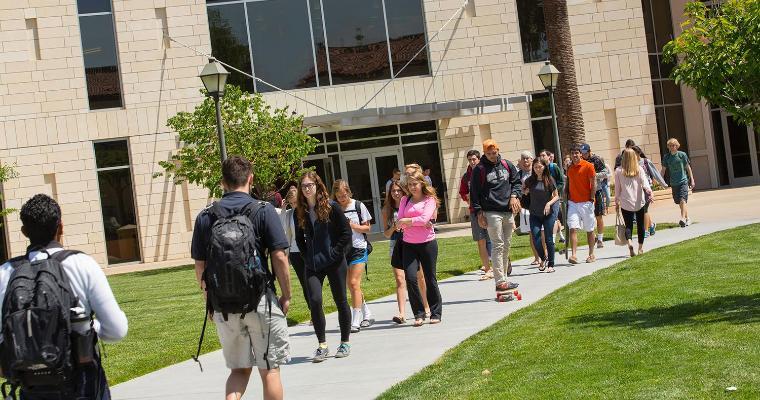
The field of data analytics is exploding and Santa Clara is at the forefront of prepping students for success.
Santa Clara University was recently ranked number 3 nationally among the best schools to study big data analytics.
The Leavey School of Business offers students a master of science degree in business analytics, which is one of the best in the country.
- Tech Republic.
“SCU has been delivering engineers and experts into the tech industry for many years,” writes Value Colleges in their Top 50 Best Value Big Data Graduate Programs of 2016, “making it one of U.S. News & World Report’s top regional institutions. SCU’s Leavey School of Business – one of the most respected in California – offers a Master of Science in Business Analytics designed by and for Silicon Valley and the Bay Area, preparing students for exactly the kind of work they will be doing in real world, with exactly the kind of knowledge and problem-solving skills they will need.”
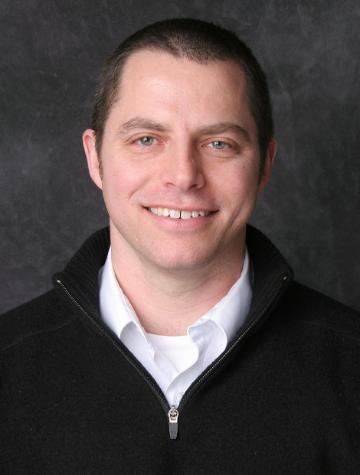
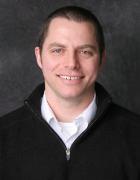
John Ifcher, assistant professor of economics, has received an award from the Russell Sage Foundation to support his project “Behavioral-Economic Phenomena in Group Decision and Decision for Others". In collaboration with Dr. Homa Zharghamee of Barnard College and Dr. Jeremy Shapiro at the Busara Center for Behavioral Economics, the research will examine discrepancies in the decision-making of individuals on behalf of themselves, individuals on behalf of others, and groups.
Learn more about Professor John Ifcher.

I enjoyed my first year as Sr. Administrative Assistant in Anthropology, and enjoy working with the undergraduates and being back on the main campus. I took time off at the end of the year to have a total knee replacement, and once again can enjoy walking on such a beautiful campus. My first grandchild (Augustus John) was born in February to my oldest daughter and her wife, and my youngest daughter is engaged. I continue to paint in my studio at The Alameda Artworks, and love the creative energy that comes with it. Babies, weddings, art and being able to smell the roses on campus are beautiful things to look forward to each day.
